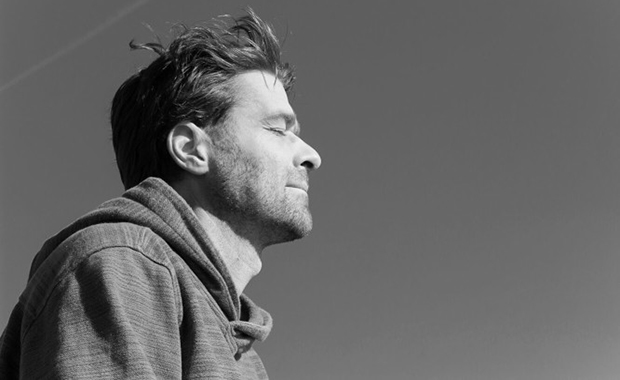Life
A Simple 7 Step Process to Mindfulness for Beginners

How many of you can relate to this? You’re living in a big city. You commute to work each day to a job you dislike. As you push past other commuters on the sidewalk or nudge up against strangers on public transport, you daydream about your last trip to somewhere exotic. You imagine planning your next trip, and you imagine a well deserved pint after work with your friends.
At the office you do tasks you find tedious or pointless, so you distract yourself by tracking the price of Bitcoin online, texting your friends, or planning your next vacation. You get dragged to meeting after meeting and seem like you’ll never be free to explore your true passions which, you don’t even know what they are.
Whenever you talk with your friends and family, you’re constantly reliving the past or planning for the future. On the way home you try to ignore the blaring sirens of ambulances and police cars driving past, the cacophony of humanity around you as you stumble into the nearest pub and try to drown the boredom and frustration with a pint.
“The little things? The little moments? They aren’t little.” – Jon Kabat-Zinn
This scenario is well known to many of us that live and work in the modern world. We are caught up in well-built habit loops which allow us to think back into the past or ahead into the future but allow us to conveniently avoid what’s going on around us. We do this because as humans we are trying to conserve vital mental energy and processing power. Sadly, this means that few of us live in the present moment and are aware of our surroundings on a regular basis.
Mindful meditation is a practice that is fast becoming a global phenomenon. It is a type of meditation that helps individuals focus their efforts and their mental energy on the present moment. It has been argued by spiritual aspirants and medical professionals alike that mindful meditation helps reduce stress and alleviate symptoms of boredom, lack of motivation, and even attention deficit disorder.
Here is a seven-step process you can try to help you start to develop your own mindful meditation practice:
Step 1: Sit
Find a spot that will allow you to sit free from distraction for 10 to 15 minutes. This might be a park bench, a conference room, a train car, the seat on a bus, a closet, a couch, a yoga studio or in the middle of the floor of your kitchen. In the end, it doesn’t really matter where you sit, as long as you can find a place that is comfortable and will allow you to avoid distractions for between 10 to 15 minutes without being called to take care of some task or interrupted by a friend or stranger.
Step 2: Straighten up
Settle into the right posture with a straight back and feet resting on the floor or crossed underneath you. Finding a relaxed and alert posture is important when you attempt to develop a mindfulness practice, because as you enter the meditation phase of the practice you will become aware of any slight discomfort. The more balanced your posture when you start, the better off the practice will go.
Step 3: Close your eyes… or don’t
Some people prefer to close their eyes while they practice sitting meditation, while others prefer to maintain a soft gaze looking straight ahead or focusing on a single object. Both options work, but if you are just starting off it may be easier to close your eyes to avoid distraction from the outside world.
“Many people are alive but don’t touch the miracle of being alive.” – Thích Nhất Hạnh
Step 4: Focus on your breath… or anything
Again, one of the easiest ways to develop a keen awareness for the present moment is to focus on your breath. That being said, some people prefer focusing on a single object nearby, or on the sensation in a certain part of their body. To each their own. I would experiment to see what works best for you.
Step 5: Be open to distractions
The harder you try to block out all distractions from your mind, the more challenging it will be to find flow and reach that altered state of consciousness.
Step 6: Feel the burn, and let it pass
Understand that the process of mindful meditation is like going to the gym; you are training your mind and building habit loops which will benefit you in the long run. When someone is trying to get fit, they will often elect to take the stairs up to their apartment or to their office rather than take the elevator.
When your legs start to ache and you become short of breath, you don’t think “I’m climbing the stairs wrong,” instead you think “I’m out of shape, I should climb the stairs more often!” The same goes for mindful meditation.
Mindful meditation is something that should be practised just as people practice yoga or go to the gym. You are working out your mind, so you should treat the practice like a workout. You will get better with time, but it will be hard work.
Step 7: Look for little wins
It is expected that you will become distracted many times over the course of a mindful meditation practice, it’s completely natural. Rather than being disheartened by this, try to become aware of the moments in which you become distracted. Once you become aware that this distraction is present, consider celebrating your ability to recognize it as what it is, a distraction, before returning to your breath.
While this seven-step process doesn’t provide much detail into the actual practice of mindful meditation, there are plenty of programs available online that provide free mindful meditation courses and lessons for you to try.
Do you practice meditation? Comment below!
Image courtesy of Twenty20.com
Did You Know
How Skilled Migrants Are Building Successful Careers After Moving Countries
Behind every successful skilled migrant career is a mix of resilience, strategy, and navigating systems built for locals.

Moving to a new country for work is exciting, but it can also be unnerving. Skilled migrants leave behind familiar systems, networks, and support to pursue better job opportunities and a better future for their families. (more…)
Life
10 Research-Backed Steps to Create Real Change This New Year
This New Year could finally be the one where you break old patterns and create real, lasting change.

Every New Year, we make plans and set goals, but often repeat old patterns. (more…)
Life
9 Harsh Truths Every Young Man Must Face to Succeed in the Modern World
Before chasing success, every young man needs to face these 9 brutal realities shaping masculinity in the modern world.

Many young men today quietly battle depression, loneliness, and a sense of confusion about who they’re meant to be.
Some blame the lack of deep friendships or romantic relationships. Others feel lost in a digital world that often labels traditional masculinity as “toxic.”
But the truth is this: becoming a man in the modern age takes more than just surviving. It takes resilience, direction, and a willingness to grow even when no one’s watching.
Success doesn’t arrive by accident or luck. It’s built on discipline, sacrifice, and consistency.
Here are 9 harsh truths every young man should know if he wants to thrive, not just survive, in the digital age.
1. Never Use Your Illness as an Excuse
As Dr. Jordan B. Peterson often says, successful people don’t complain; they act.
Your illness, hardship, or struggle shouldn’t define your limits; it should define your motivation. Rest when you must, but always get back up and keep building your dreams. Motivation doesn’t appear magically. It comes after you take action.
Here are five key lessons I’ve learned from Dr. Peterson:
-
Learn to write clearly; clarity of thought makes you dangerous.
-
Read quality literature in your free time.
-
Nurture a strong relationship with your family.
-
Share your ideas publicly; your voice matters.
-
Become a “monster”, powerful, but disciplined enough to control it.
The best leaders and thinkers are grounded. They welcome criticism, adapt quickly, and keep moving forward no matter what.
2. You Can’t Please Everyone And That’s Okay
You don’t need a crowd of people to feel fulfilled. You need a few friends who genuinely accept you for who you are.
If your circle doesn’t bring out your best, it’s okay to walk away. Solitude can be a powerful teacher. It gives you space to understand what you truly want from life. Remember, successful men aren’t people-pleasers; they’re purpose-driven.
3. You Can Control the Process, Not the Outcome
Especially in creative work, writing, business, or content creation, you control effort, not results.
You might publish two articles a day, but you can’t dictate which one will go viral. Focus on mastery, not metrics. Many great writers toiled for years in obscurity before anyone noticed them. Rejection, criticism, and indifference are all part of the path.
The best creators focus on storytelling, not applause.
4. Rejection Is Never Personal
Rejection doesn’t mean you’re unworthy. It simply means your offer, idea, or timing didn’t align.
Every successful person has faced rejection repeatedly. What separates them is persistence and perspective. They see rejection as feedback, not failure. The faster you learn that truth, the faster you’ll grow.
5. Women Value Comfort and Security
Understanding women requires maturity and empathy.
Through books, lectures, and personal growth, I’ve learned that most women desire a man who is grounded, intelligent, confident, emotionally stable, and consistent. Some want humor, others intellect, but nearly all want to feel safe and supported.
Instead of chasing attention, work on self-improvement. Build competence and confidence, and the rest will follow naturally.
6. There’s No Such Thing as Failure, Only Lessons
A powerful lesson from Neuro-Linguistic Programming: failure only exists when you stop trying.
Every mistake brings data. Every setback builds wisdom. The most successful men aren’t fearless. They’ve simply learned to act despite fear.
Be proud of your scars. They’re proof you were brave enough to try.
7. Public Speaking Is an Art Form
Public speaking is one of the most valuable and underrated skills a man can master.
It’s not about perfection; it’s about connection. The best speakers tell stories, inspire confidence, and make people feel seen. They research deeply, speak honestly, and practice relentlessly.
If you can speak well, you can lead, sell, teach, and inspire. Start small, practice at work, in class, or even in front of a mirror, and watch your confidence skyrocket.
8. Teaching Is Leadership in Disguise
Great teachers are not just knowledgeable. They’re brave, compassionate, and disciplined.
Teaching forces you to articulate what you know, and in doing so, you master it at a deeper level. Whether you’re mentoring a peer, leading a team, or sharing insights online, teaching refines your purpose.
Lifelong learners become lifelong leaders.
9. Study Human Nature to Achieve Your Dreams
One of the toughest lessons to accept: most people are self-interested.
That’s not cynicism, it’s human nature. Understanding this helps you navigate relationships, business, and communication more effectively.
Everyone has a darker side, but successful people learn to channel theirs productively into discipline, creativity, and drive.
Psychology isn’t just theory; it’s a toolkit. Learn how people think, act, and decide, and you’ll know how to lead them, influence them, and even understand yourself better.
Final Thoughts
The digital age offers endless opportunities, but only to those who are willing to take responsibility, confront discomfort, and keep improving.
Becoming a man today means embracing the hard truths most avoid.
Because at the end of the day, success isn’t about luck. It’s about who you become when life tests you the most.
Change Your Mindset
The Four Types of Happiness: Which One Are You Living In?
Most people chase success only to find emptiness, this model reveals why true happiness lies somewhere else.

In a world driven by rapid technological growth and constant competition, many people unknowingly trade joy for achievement. (more…)
-

 Did You Know4 weeks ago
Did You Know4 weeks agoThe Success Patterns You Inherited (And Didn’t Notice)
-

 Entrepreneurs3 weeks ago
Entrepreneurs3 weeks agoThe Essential Skills Every Entrepreneur Needs In 2026
-

 Business4 weeks ago
Business4 weeks agoThe Hidden Money Pit in Your Operations (and How to Use It)
-

 Change Your Mindset3 weeks ago
Change Your Mindset3 weeks agoHow to Turn Your Mind Into Your Greatest Asset (Instead of Your Enemy)
-

 Change Your Mindset2 weeks ago
Change Your Mindset2 weeks agoThe Silent Skill That Makes People Respect You Instantly
-

 Life2 weeks ago
Life2 weeks ago10 Research-Backed Steps to Create Real Change This New Year
-

 Tech2 weeks ago
Tech2 weeks agoWhat’s in a Name? How to Get Your Domain Right
-

 Did You Know1 week ago
Did You Know1 week agoHow Skilled Migrants Are Building Successful Careers After Moving Countries

























2 Comments